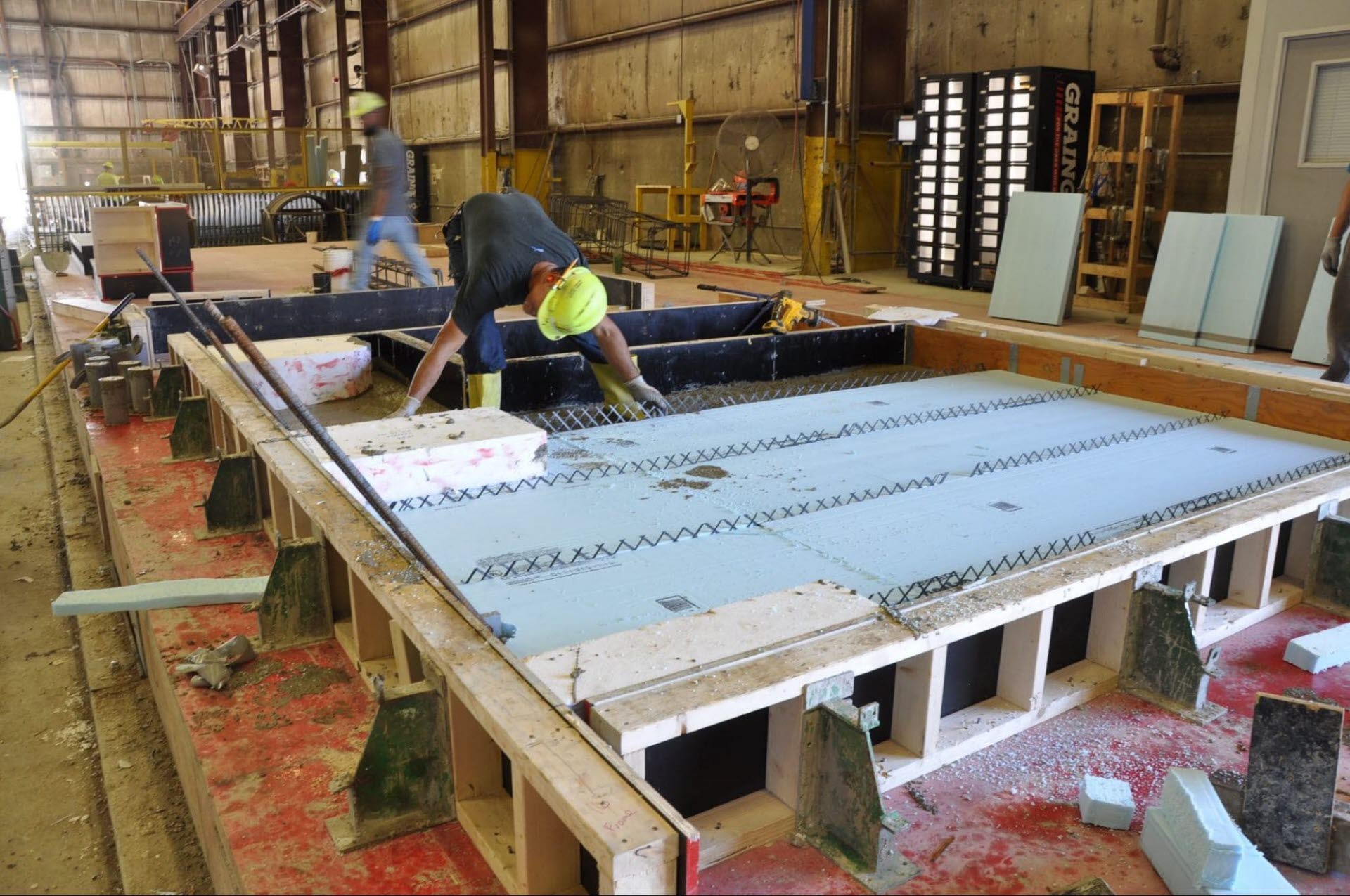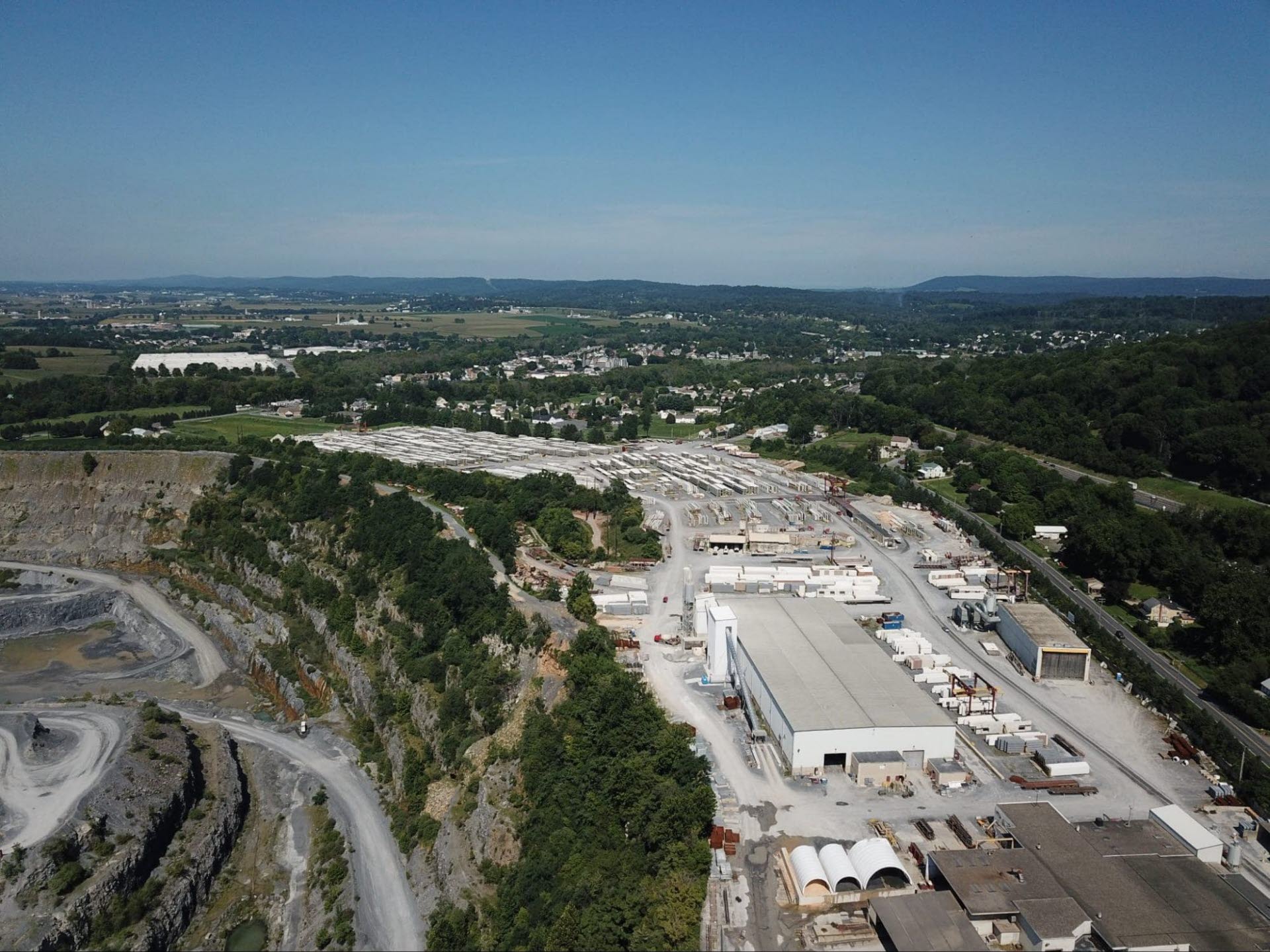Precast Concrete Data Center Webinar Recap

In our most recent webinar, we discussed the unique benefits of a precast concrete data center and how you can incorporate this building material into your next project.
Missed your chance to watch the webinar? That’s okay, we’ll outline the key takeaways below, including designing a data center with precast concrete, our production process, and solid vs insulated panels.
Designing a Data Center with Precast Concrete
There are various ways to incorporate precast concrete into your structure. You can choose to use it as a facade for an existing building, as a load-bearing material for a new building, or design a total precast concrete data center.
Architectural Non-Loadbearing
Architectural non-loadbearing panels are a facade only and are installed after structural framing is in place. These panels have the same aesthetic versatility as other precast concrete panels, but have fewer maintenance requirements and are used as an enclosure system.
Architectural Load Bearing
Architectural load-bearing panels are more than an external shell of your data center facility, these panels support roof and internal structural loads. You can choose to have solid load-bearing panels or insulated panels, depending on the purpose of your building.
Unlike non-loadbearing walls, load-bearing walls are installed simultaneously as the internal structure.
Total Precast Systems (TPS)
With a total precast system, you’ll receive the full benefits of precast concrete. The speed of construction is unmatched compared to other building materials, and it’s a more sustainable process.
Our team can complete everything within our precast concrete plant and the panels can span up to 60’ and are storm and fire-resistant.

The Precast Concrete Production Process
The next portion of the webinar speaks to the process of creating your data center facility — from sales to final detailing. As we mentioned above, there are a lot of moving parts for how your precast panels are made, because a majority is done at the plant.
Solid vs Insulated Panels
There are two different types of precast panels you can choose for your data center design. The purpose of your building and what’s happening between the four walls will help you determine which type of panel is best.
Our team is generally going to recommend insulated panels, because of thermal efficiency benefits, and the ability to have continuous insulation throughout the entire building. Especially in a data center, where there are a lot of running systems that could be damaged from excessive heat.
Wythe Connectors
For insulated panels, our team uses Wythe connectors to sandwich the architectural panel and the structural panel around the insulation type of your choosing. These connectors are non-corrosive so they aren’t damaged by chemical actions. These connectors also do not affect the overall R-value of the panels, contrary to popular belief.
You can also decide to incorporate Carbon fiber grids into your panels to further enhance insulation and durability. Although this may come with a higher initial cost, the tensile strength of Carbon fiber grids means less utility costs over the lifespan of your structure.
Panelization
One of the more significant benefits of precast concrete is the efficient use of materials. A single panel can range between 8 and 12 feet and have a maximum height of 60 feet. These dimensions mean more of your building is constructed simultaneously and installation processes are simplified.
You can further minimize costs and materials by repeating patterns on your panels. Our team uses molds and formliners to create these designs, so repetitive patterns allow us to use these molds multiple times throughout your project.
The Thermal Benefits of Precast Concrete
As we said above, insulated panels are going to provide continuous insulation for your structure, which will help you maintain and control interior temperatures without increasing utility costs. Continuous insulation also eliminates moisture permeation so your structure can remain high-quality over time.
Your precast concrete data center facility will have what’s called a thermal mass effect. This positive effect means that the panels absorb heat with a slow release so indoor temperatures don’t fluctuate as much throughout peak heating and cool times.
This is especially useful for data center walls because there are a lot of operating systems in the building that may cause interior temperatures to rise or overheat.
Precast concrete has a relatively high R-value, which means that heat won’t flow through the building as easily. For you, that allows you to cool down your facility without cranking up the AC.
Three Insulation Types
There are three different types of insulation you can choose from to go between your precast concrete panels. There are slight differences between the three including, r-value, cost, and density.
- Expanded/Molded Polystyrene (EPS): A white insulation with an R-value of 4 per inch. This type of insulation is the lowest in cost compared to the rest. EPS is most similar to a heavier Styrofoam with a density of 1.5 pounds per cubic foot.
- Extruded Polystyrene (XPS): This insulation type is the most popular used amongst builders because it's a bit heavier and has an R-value of up to 5 per inch. With an R-value of 5 and a density of 2.0 pounds per cubic foot, Extruded Polystyrene is an efficient choice when looking to better maintain interior temperatures and reduce utility costs.
- Polyisocyanurate: The final type of insulation has the same density as XPS but has the highest R-value. As a result, this is the most expensive insulation type and has the potential to lose its R-value over the lifespan of the building.

Additional Benefits For Precast Concrete Data Centers
The high thermal efficiency and insulation of your building are not the only advantages of precast concrete. The next section of our webinar highlights other ways your team can benefit by incorporating this building material into your new project.
Job Site Installation Speed
The sooner your structure is installed, the sooner your team is able to move in and start operations. Speed and efficiency are top priorities for our team. Because a majority of your precast concrete data center is produced off-site, a pre-approved schedule is put in place for installation.
We’ll work with contractors and developers to coordinate a timeline for an efficient installation. Daily, 10 to 16 precast panels can be installed. Depending on the size of your structure, your data center can be installed in a matter of days or weeks.
Apart from the efficiency of installation, precast concrete also results in a safer on-site working environment. Ultimately, fewer crew members are needed on-site for precast concrete installations, so there is a reduced risk of injury or miscommunication.
Not only is the job site safer, but this also helps cushion the effects of the construction workforce shortage.
Resiliency & Durability
Within your data center facility, there are a lot of important systems, equipment, and operations. By incorporating precast concrete into your exterior structure, you’re protecting the center from severe storms, explosions, fire, and seismic damage.
Data center facilities may be more susceptible to explosions or fires because of the systems operating within them. And when something like this does occur, the average downtime for a data center is 17.5 hours.
Your systems are expected to be running for every hour of the day, so be proactive with a more durable and blast-resistant material, like precast concrete.
Because of the durability of precast concrete, this material also makes for excellent storm shelters or interior storm pods for your staff or irreplaceable documents, equipment, and people.
Moisture Protection
Precast concrete is non-cavity construction so there’s higher protection against moisture, rot, and corrosion. In fact, precast concrete has a near-perfect moisture performance and will only grow stronger in the presence of water.
External caulking further supports moisture prevention and elongates the health of your exterior structure. You can choose between silicone or urethane caulking depending on whether you’ll be painting your data center walls.
Connect with industry experts and learn how to elevate your infrastructure by signing up for our next AIA-certified precast concrete webinar.

